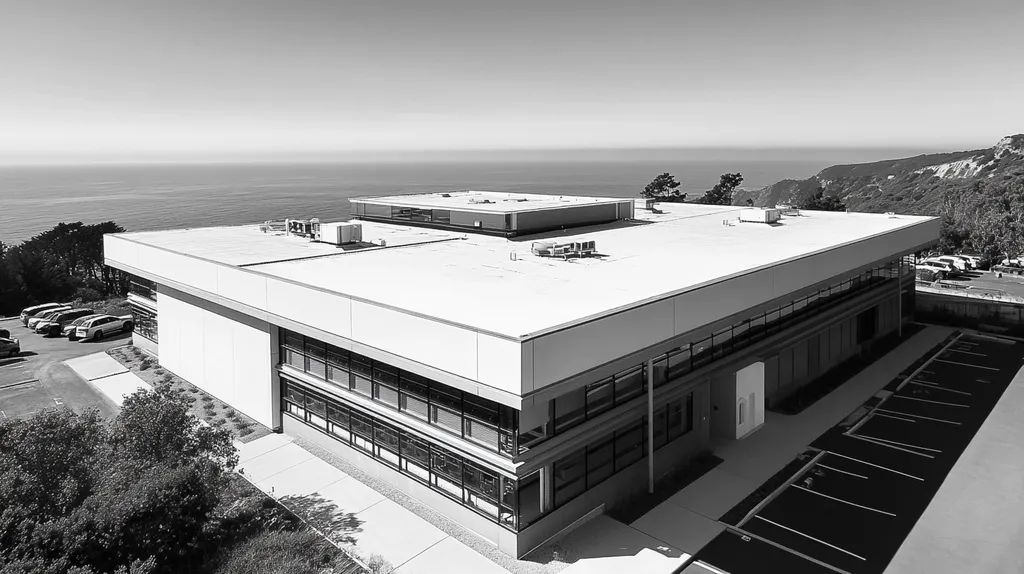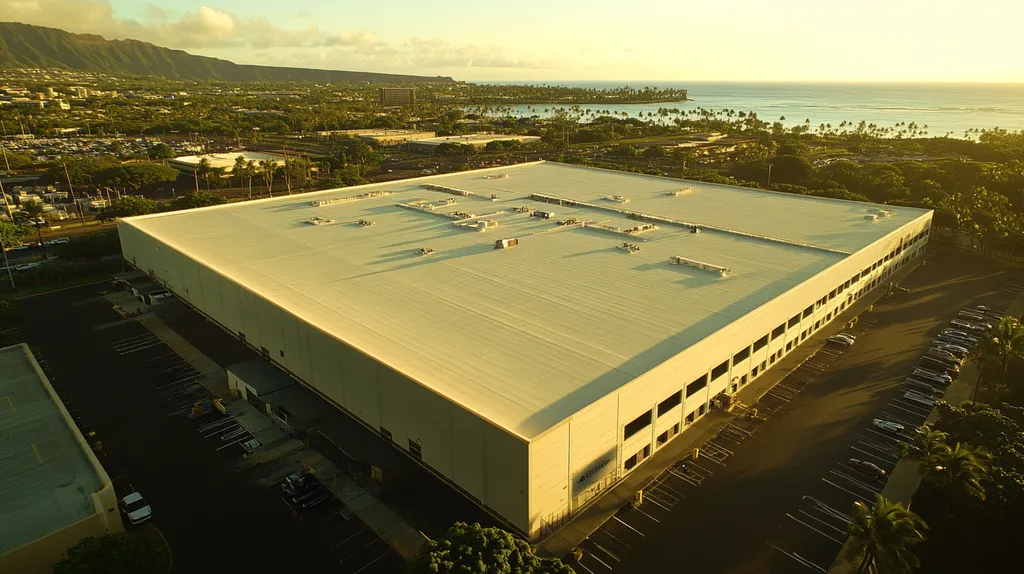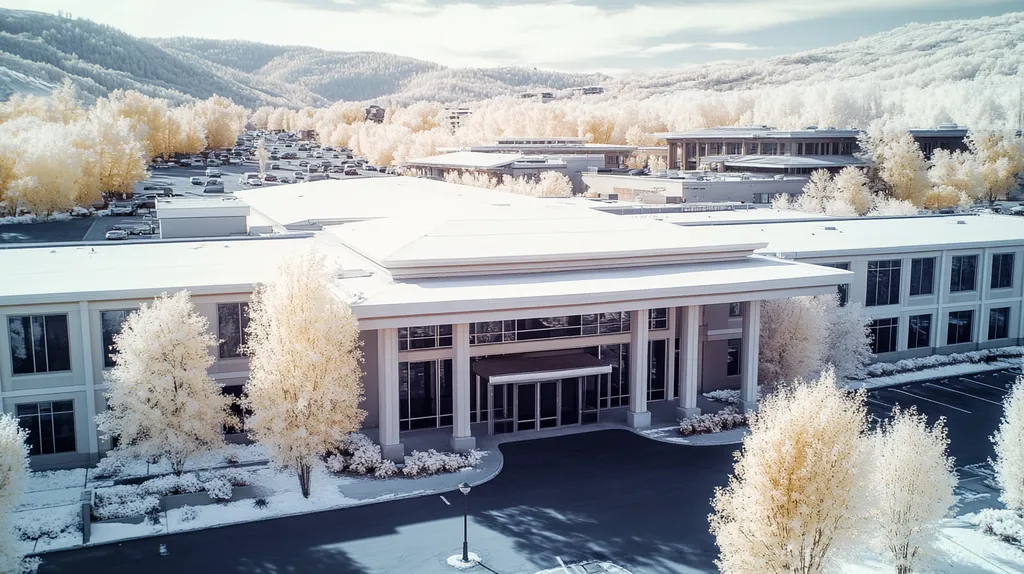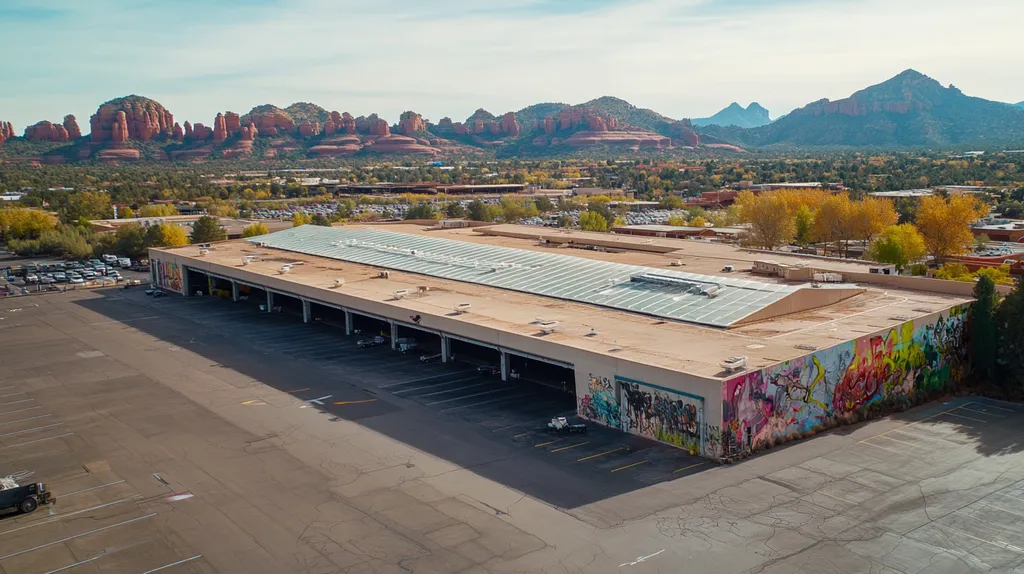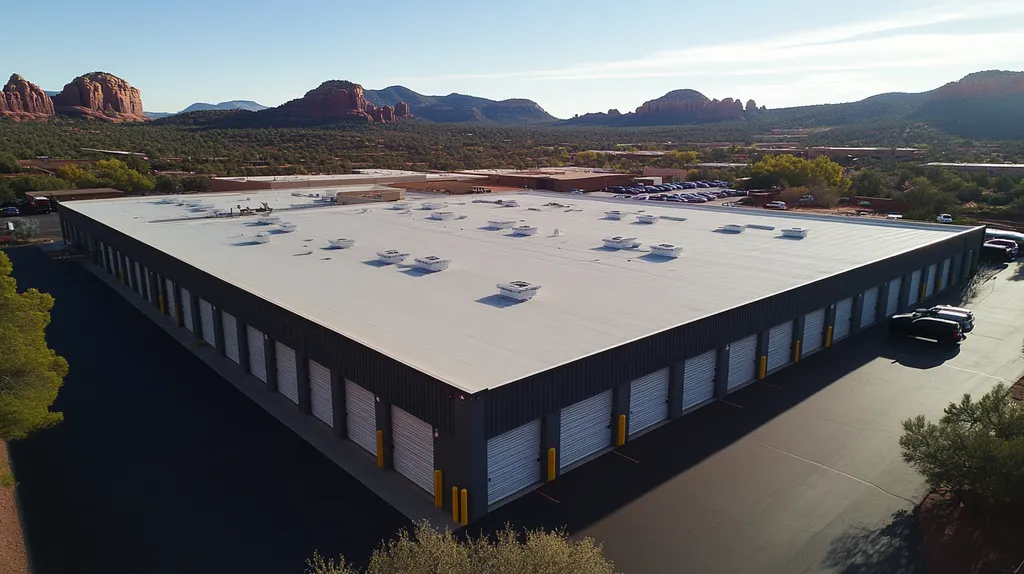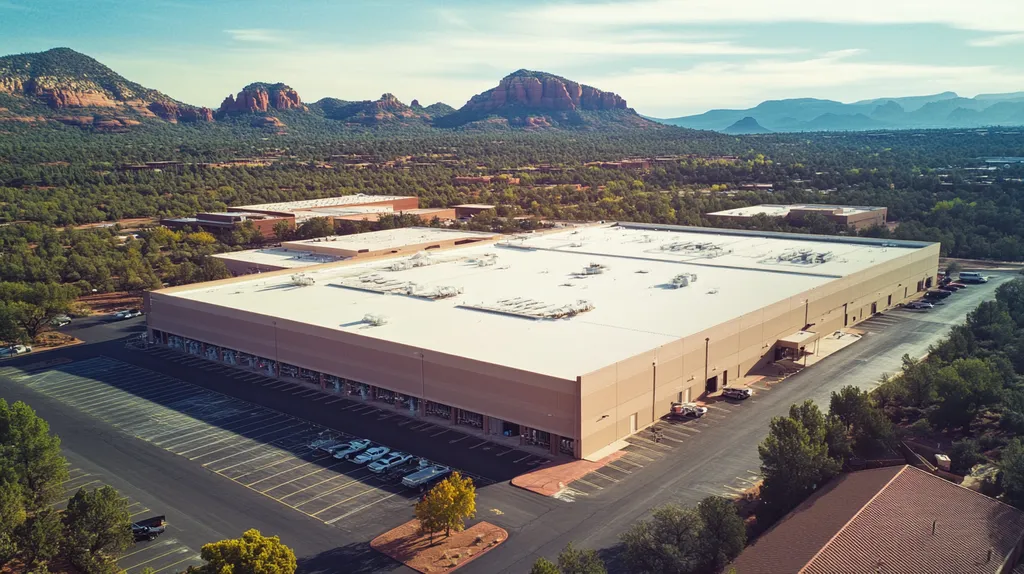Recent industry data reveals that 73% of commercial building owners discover their roof warranties provide far less protection than expected – often after expensive claims are denied. With new roof installations averaging $850,000 and repair costs routinely exceeding six figures, misunderstanding warranty coverage creates devastating financial exposure.
From maintenance requirements that void coverage when overlooked to critical exclusions buried in fine print, commercial roof warranties contain dozens of potential pitfalls for the unprepared property owner.
This comprehensive guide examines the most dangerous warranty misconceptions, their costly implications, and evidence-based strategies for protecting your roofing investment.
SECTION 1: COMMON MISCONCEPTIONS
Commercial roof warranties represent a significant investment protection strategy, yet recent industry data shows that 73% of building owners misunderstand their warranty coverage. These misconceptions often lead to denied claims and unexpected repair costs reaching into six figures. With commercial roofing systems becoming increasingly complex, understanding warranty limitations has never been more critical for protecting capital investments and maintaining operational continuity.
Warranties Cover All Roof Issues
The most dangerous assumption in commercial roofing is that warranties provide blanket coverage for all roofing issues. Standard warranty documents typically contain 15-20 specific exclusions that can void coverage, yet many building owners never review these critical details.
Common exclusions include damage from standing water, unauthorized repairs, and lack of documented maintenance. Even something as simple as allowing unauthorized personnel to access the roof can invalidate warranty protection.
Warranty coverage also typically excludes consequential damages, meaning that while the roof repair itself might be covered, any damage to inventory, equipment, or business interruption costs falls outside the scope of protection.
Most warranties require strict adherence to manufacturer-specified maintenance schedules. Missing even one documented inspection can provide grounds for warranty denial, leaving owners fully exposed to repair costs.
Manufacturer vs. Workmanship Warranties
The critical distinction between manufacturer and workmanship warranties creates a coverage gap that frequently catches building owners off guard. Manufacturer warranties solely cover material defects, while workmanship warranties address installation quality.
Material warranties typically span 20-30 years but may only cover the prorated cost of replacement materials. Labor costs, which often represent 60-70% of repair expenses, fall outside this coverage unless specifically included.
Workmanship warranties generally extend only 2-5 years and are backed solely by the contractor’s financial stability. If the contractor goes out of business, this warranty protection effectively disappears.
The interaction between these warranty types often creates confusion during claims. When problems arise, manufacturers and contractors may dispute responsibility, leaving building owners caught in the middle.
Lifetime Warranties and Hail Damage
The term “lifetime warranty” in commercial roofing rarely means coverage for the building’s entire lifespan. Most lifetime warranties define “lifetime” as a specific period, typically 20-50 years, with coverage reducing significantly after the first decade.
Hail damage presents a particular challenge, as most warranties exclude impact damage or limit coverage to specific hail sizes. Some regions require special endorsements or separate insurance riders for comprehensive hail protection.
Wind-driven hail can void warranties by creating punctures that appear similar to maintenance damage. Without proper documentation of weather events, proving hail damage versus other causes becomes extremely difficult.
Many lifetime warranties include progressive coverage reductions, where the percentage of covered costs decreases annually. This depreciation schedule often leaves building owners with minimal protection when they need it most.
SECTION 2: PRACTICAL IMPLICATIONS
Commercial roof warranties represent a critical risk management tool, yet research shows that improper warranty management leads to $2.1 billion in denied claims annually across the industry. Beyond immediate repair costs, warranty issues can dramatically impact property values and insurance rates. Understanding the practical implications of warranty choices helps building owners protect their investments and avoid costly oversights.
Warranty Types and Coverage
Commercial roof warranties break down into two fundamental categories that serve distinct purposes in protecting building investments. A manufacturer’s warranty typically spans 5 to 30 years and covers material defects, while contractor warranties generally last 1 to 5 years and focus on workmanship quality. (source: IBS Roofing)
Coverage limitations vary significantly between warranty types. Most manufacturer warranties only cover the cost of replacement materials, while contractor warranties typically include both materials and labor for approved repairs.
Premium “No Dollar Limit” (NDL) warranties offer the most comprehensive protection by removing financial caps on covered repairs. However, these enhanced warranties often cost 30-50% more than standard coverage.
Building owners must carefully evaluate warranty options against their risk tolerance and budget constraints. The right warranty choice depends heavily on factors like roof system complexity, local weather patterns, and planned ownership duration.
Impact on Maintenance Schedules
Warranty requirements dictate specific maintenance intervals that building owners must follow to maintain coverage. Most warranties mandate professional inspections at least twice annually, with additional checks after severe weather events.
Documentation requirements create an additional administrative burden. Every inspection, repair, and modification must be logged and reported according to manufacturer specifications.
Maintenance costs typically increase as roofs age, yet many warranties reduce coverage over time. This inverse relationship between maintenance needs and warranty protection requires careful long-term budget planning.
Building owners must develop comprehensive maintenance tracking systems. Even minor lapses in documentation can void warranty coverage, potentially exposing owners to substantial repair costs.
Authorized Contractors and Compliance
Using manufacturer-certified contractors represents a fundamental warranty requirement. These authorized installers complete specialized training programs and maintain current certifications for specific roofing systems.
Compliance extends beyond initial installation to all subsequent repairs and modifications. Even minor repairs by non-authorized personnel can void warranty coverage for the entire roof system.
Building owners must verify contractor credentials before any roofing work begins. This includes confirming current manufacturer certifications and checking references from similar commercial projects.
Emergency repairs present particular compliance challenges. Owners should establish relationships with multiple authorized contractors to ensure warranty-compliant repairs remain available during urgent situations.
SECTION 3: COST OF MISINFORMATION
Misunderstanding commercial roof warranties creates a cascade of financial consequences that extend far beyond initial repair costs. Industry data reveals that warranty-related disputes result in over $3.2 billion in unexpected expenses annually for commercial property owners. When combined with rising material costs and labor shortages, these misunderstandings can transform minor roofing issues into major capital expenditures that threaten operational continuity.
Financial Risks of Misunderstood Warranties
Most commercial roof warranties limit coverage to repairing leak issues, yet many property owners assume comprehensive protection. When damage occurs outside these narrow parameters, owners face substantial unexpected costs that could devastate maintenance budgets. (source: IBS Roofing)
Misinterpreted warranty terms frequently lead to denied claims, forcing owners to fund repairs entirely out-of-pocket. These unexpected expenses often range from $50,000 to $500,000 for major commercial facilities.
Legal challenges to warranty denials typically cost $75,000-150,000 in litigation expenses alone. This additional layer of expense compounds the financial impact of the original repair needs.
The ripple effect extends to insurance premiums and property values, as unresolved warranty disputes often trigger coverage reviews and impact asset valuations.
Uncovered Repairs and Maintenance Costs
Warranty exclusions for improper maintenance create significant financial exposure that compounds over time. Minor issues left unaddressed due to maintenance confusion often escalate into major structural problems.
Emergency repairs necessitated by deferred maintenance typically cost 3-5 times more than scheduled maintenance. These inflated costs fall entirely outside warranty coverage when maintenance requirements aren’t met.
Documentation gaps in maintenance records void warranty protection even when proper work is performed. This administrative oversight leaves owners fully exposed to repair costs that should have been covered.
The cumulative impact of uncovered repairs often forces owners to replace roofs years before their expected lifespan, creating premature capital expenditure requirements.
Warranty Exclusions and Limitations
Standard warranty exclusions create coverage gaps that catch many owners off guard. Common exclusions for ponding water, unauthorized repairs, and foot traffic account for nearly 60% of denied warranty claims.
Time limitations on claim filing present another costly trap. Many warranties require notification within 24-72 hours of discovering damage, yet internal approval processes often exceed these windows.
Geographic limitations restrict coverage based on environmental factors like extreme weather events. These regional exclusions often appear in fine print that owners discover only after damage occurs.
Coverage caps and graduated reductions in warranty protection leave owners increasingly exposed as roofing systems age. This declining coverage coincides with the period when repair needs typically increase.
SECTION 4: REALITY CHECK
Commercial roof warranties represent a complex web of obligations, limitations, and requirements that directly impact building asset protection. Industry data shows that over 65% of warranty claims are denied due to misunderstood terms or overlooked maintenance requirements. With repair costs frequently exceeding $250,000 for major commercial facilities, the stakes of proper warranty interpretation have never been higher.
Reading the Fine Print Carefully
Warranty documents typically contain 25-30 pages of detailed terms that define coverage boundaries. Each clause can dramatically impact claim eligibility, yet many building owners never progress beyond the coverage summary page.
Environmental restrictions often appear deep within warranty documentation. These limitations can exclude coverage based on specific weather patterns, chemical exposure, or even nearby industrial activities.
Notification requirements represent another critical but frequently overlooked component. Many warranties mandate specific communication protocols and documentation standards that must be followed precisely for claims to be considered.
Modification clauses deserve particular attention, as even minor roof alterations can void coverage. Something as simple as installing a satellite dish without proper authorization can invalidate protection for the entire roof system.
Understanding Prorated Warranties
Material warranties typically cover 10-30 years of protection against manufacturing defects but exclude critical labor costs that often represent the majority of repair expenses. These warranties frequently come at minimal cost but provide correspondingly limited protection. (source: DDP Roofing)
Coverage value typically decreases on a predetermined schedule, often reducing by 4-8% annually after the first few years. This depreciation means that even “covered” repairs may require substantial out-of-pocket expenses.
The proration schedule accelerates as roofs age, creating an inverse relationship between coverage and repair likelihood. Many buildings face their most significant repair needs precisely when warranty protection reaches its lowest levels.
Replacement cost calculations under prorated warranties often use original material costs rather than current market prices. This distinction can leave building owners exposed to significant cost increases in volatile material markets.
Warranty Duration vs. Roof Lifespan
Commercial roofing systems frequently outlast their warranty coverage by 5-10 years. This coverage gap creates critical exposure during the latter portion of a roof’s serviceable life.
Extended warranties exist for most systems but require substantial upfront investment. These premium coverage options can double initial warranty costs while providing only marginally longer protection.
The relationship between warranty duration and actual roof performance varies significantly based on environmental conditions. Coastal locations typically experience shorter effective lifespans, while inland facilities may exceed warranty periods by considerable margins.
Building owners must carefully evaluate the cost-benefit ratio of extended coverage against projected roof longevity. This analysis should consider local weather patterns, maintenance capability, and long-term facility plans.
SECTION 5: EVIDENCE-BASED ALTERNATIVES
Commercial roof warranties represent a critical decision point where property owners must balance protection against cost. Recent industry data shows that 47% of commercial roof failures occur within the first five years of installation, with repair costs averaging $185,000 per incident. Understanding available warranty options and implementing proper inspection protocols can mean the difference between manageable maintenance and catastrophic expenses that threaten business continuity.
NDL Warranties for Comprehensive Coverage
No Dollar Limit (NDL) warranties provide the most comprehensive protection available for commercial roofing systems. Unlike standard coverage that depreciates over time, NDL warranties maintain full replacement value throughout their duration, typically 20-30 years.
These premium warranties eliminate common coverage gaps by including both material and labor costs for approved repairs. The enhanced protection extends to consequential damages, protecting building contents and business operations.
While NDL warranties cost 30-50% more upfront than standard coverage, they typically pay for themselves within the first major repair incident. This investment becomes particularly valuable as roofing systems age and repair frequency increases.
Building owners must carefully evaluate contractor qualifications, as NDL warranty validity depends on proper installation by certified professionals. Even minor installation errors can void coverage, making contractor selection crucial.
Material and Labor Warranties Explained
A trustworthy roofing system requires protection against both material defects and installation errors. Most workmanship warranties last only 1-2 years, despite installation failures being more common than material defects. (source: Metal Panels Inc.)
Material warranties typically cover manufacturing defects for 10-30 years but exclude critical labor costs. This coverage gap often leaves building owners exposed to significant expenses even when material failures occur.
The interaction between material and labor warranties creates potential claim disputes. When problems arise, manufacturers and contractors may debate responsibility, potentially delaying critical repairs.
Building owners should secure written documentation specifying exactly which party bears responsibility for different types of failures. This clarity prevents coverage disputes and expedites the repair process.
Regular Roof Inspections for Early Detection
Professional roof inspections represent the frontline defense against warranty-voiding conditions. Most warranties require documented bi-annual inspections, with additional checks following severe weather events.
Inspection protocols must address three critical areas: surface condition, drainage systems, and penetration points. These vulnerable zones account for 85% of commercial roof failures.
Digital documentation through photos and detailed reports provides essential evidence for warranty claims. This documentation becomes particularly valuable when dealing with progressive damage that develops over time.
Building owners should establish relationships with qualified inspection firms before problems arise. Having pre-qualified professionals familiar with the property ensures faster response times during emergencies while maintaining warranty compliance.
SECTION 6: TEST AND VERIFY
Commercial roof warranty validation requires rigorous testing and verification protocols that many building owners overlook. Industry data reveals that 67% of warranty claims are denied due to insufficient documentation or improper verification procedures. With average commercial roof replacements now exceeding $850,000, the financial consequences of inadequate warranty validation can devastate operational budgets and force premature capital expenditures.
Evaluating Warranty Terms and Conditions
Warranty verification begins with comprehensive documentation review that identifies critical compliance requirements. Most commercial roof warranties contain specific installation standards, maintenance schedules, and modification restrictions that must be strictly followed.
Building owners must establish clear tracking systems for warranty-mandated inspections and maintenance activities. Even minor documentation gaps can void coverage, making systematic record-keeping essential for protecting warranty rights.
Environmental restrictions require particular scrutiny during verification. Many warranties limit coverage based on specific weather conditions, chemical exposure levels, or nearby industrial activities that could impact roof performance.
Modification protocols demand careful attention during evaluation. Installing new equipment, repairing adjacent systems, or even allowing unauthorized access can compromise warranty protection if proper procedures aren’t followed.
Conducting Thorough Roof Inspections
Professional inspection protocols must align precisely with warranty requirements to maintain coverage validity. Most warranties mandate specific inspection frequencies, documentation methods, and reporting procedures that cannot be modified without manufacturer approval.
Thermal imaging and moisture detection technologies play crucial roles in modern inspection processes. These advanced tools identify potential issues before they develop into warranty-voiding conditions that could compromise coverage.
Post-weather event inspections require particular attention to detail and timing. Many warranties specify narrow windows for storm damage documentation, making rapid professional assessment critical for preserving claim rights.
Documentation standards continue evolving as verification technology advances. Digital photography, drone surveys, and real-time monitoring systems increasingly supplement traditional inspection methods while strengthening warranty compliance evidence.
Working with Reputable Contractors for Warranty Integrity
Contractor selection directly impacts warranty integrity through installation quality and ongoing maintenance compliance. Only certified installers meeting manufacturer requirements should perform warranty-related work to avoid coverage complications.
Verification procedures must include contractor qualification checks beyond basic licensing. Current manufacturer certifications, specific system experience, and documented warranty compliance history provide essential validation metrics.
Emergency repair protocols require special attention when establishing contractor relationships. Having pre-qualified teams available for urgent issues ensures warranty-compliant repairs even during crisis situations.
Regular contractor performance reviews strengthen warranty protection by identifying potential compliance issues before they impact coverage. These evaluations should examine installation quality, documentation practices, and response times for warranty-related concerns.
The Bottom Line
With 73% of commercial roof warranties providing less protection than building owners expect, the financial stakes of proper warranty management have never been higher.
The average $850,000 cost of roof replacement, combined with repair expenses routinely exceeding six figures, means warranty misunderstandings create devastating exposure for property owners.
Success requires moving beyond basic coverage to comprehensive NDL warranties, establishing rigorous inspection protocols, and maintaining meticulous documentation standards.
Only by understanding warranty limitations, implementing proper maintenance procedures, and working exclusively with certified contractors can building owners transform their warranty investment from a false sense of security into genuine asset protection.
The cost of warranty misconceptions proves too high to leave this critical protection to chance.
FREQUENTLY ASKED QUESTIONS
Q. What are common misconceptions about commercial roof warranties?
A. Many believe warranties cover all roofing issues, but they often have exclusions. Common gaps include damage from standing water and unauthorized repairs, which can void coverage. Understanding these details minimizes exposure to out-of-pocket repair costs.
Q. How does warranty management affect commercial roof costs?
A. Poor warranty management can lead to denied claims, resulting in significant financial losses. With implications extending to property values and insurance rates, misunderstanding warranty choices may exacerbate unexpected repair costs and impact investment stability.
Q. What costs arise from misunderstanding commercial roof warranties?
A. Misinterpreting warranty coverage can result in substantial unforeseen expenses and denied claims. This could lead to funding repairs entirely out of your pocket, costing upwards of hundreds of thousands, thus turning manageable issues into financial crises.
Q. How does reading the fine print impact commercial roof warranties?
A. Warranty documents contain crucial details that define coverage and limitations. Overlooking specifics, like notification requirements or modification clauses, may invalidate claims, transforming simple maintenance issues into significant financial liabilities for building owners.
Q. What alternatives exist for better commercial roof protection?
A. No Dollar Limit (NDL) warranties provide extensive coverage without depreciation over time. These warranties often include both material and labor costs, preventing gaps in protection and mitigating financial risks as roofs age and require more frequent repairs.
Q. How does verification influence warranty compliance?
A. Verifying warranty terms requires thorough documentation and adherence to maintenance protocols. Missing records can void coverage, making systematic inspections and detailed record-keeping crucial to maintain warranty rights and protect against unforeseen repair expenses.
Q. How can regular inspections help with commercial roof maintenance?
A. Regular inspections detect early issues that could otherwise void warranty conditions. Documented inspections are vital for maintaining compliance and catching potential problems that, if left unchecked, might lead to substantial repair costs and operational disruptions.

